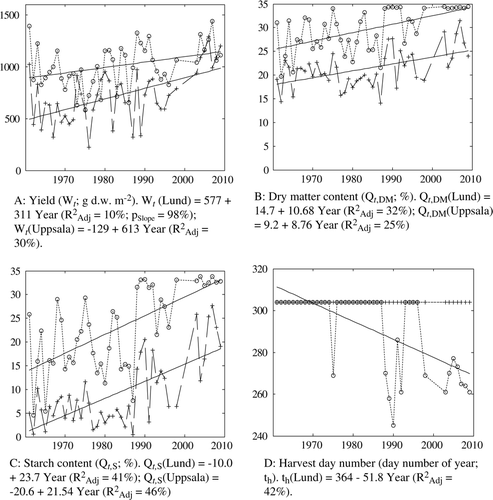Figures & data
Table I. Characterization of the simulated German silage maize cultivars. For explanation of S and K, see the text.
Table II. Positions of locations (weather stations) used for the simulations, and the simulation periods and applications in which the locations are used. Locations are sorted into three regions: Southern Götaland, Northern Götaland and Svealand, respectively.
Table III. Simulated maize harvest date, dry-matter yield, dry-matter content and starch content for different cultivars at selected locations during the 2003–2009 period. Values are provided as absolute values and expressed as the relative value to the mean of all cultivars. A year is classified as successful when a dry-matter content of 340 g kg−1 is achieved; [ ] refers to 280 g kg−1.
Table IV. Simulated maize sowing and harvest dates, dry-matter yield, dry-matter content and starch content for different locations for the early cultivar Janna. Average for 2003–2009. A year is classified as successful when a dry-matter content of 340 g kg−1 is achieved before 31 October.
Figure 1. Simulated maize production and harvest date for cultivar Janna from 1961 to 2009 for Lund (circles and upper regression line) and Uppsala (crosses and lower regression line) versus year. The probability of slope (pSlope) of the regression lines being different from zero is larger than 99.9% unless specified. Year in the equation is the number of year since 1960.
